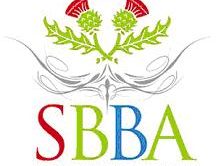BBE reiterates DCMS guidance for brass bands following restrictions extension
It was confirmed by the Prime Minister on 14 June that Stage 4 of the roadmap to recovery will not take place on 21 June as planned. Brass Bands England (BBE), through working in conjunction with the Department for Digital, Culture, Media and Sport (DCMS), can confirm that there are no changes to the current guidance.
Due to the rise in cases and concern over the spreading of the Delta Variant, BBE would like to take this opportunity to highlight some areas that have the potential to increase the risk of the virus spreading and have generated a large number of questions being dealt with by the team as a result of seeing others’ activity on social media.
We have sought clarification from the DCMS on the following areas:
Social Distancing within groups
While activity is allowed to take place in larger groups thanks to the exemption to allow multiple groups to be directed by a single individual, it is imperative that, within these groups, social distancing is maintained at 2m between individuals. This instruction comes directly from the DCMS Performing Arts Guidance, which states for non-professionals (defined as those participating in the performing arts other than for work purposes, such as in an amateur choir, orchestra or music group): ‘Activities should be organised to allow for social distancing to be maintained,’ in addition to guidance that also includes professionals when training to ‘avoid any unnecessary training exercises that comprise social distancing.’
In this area the guidance also references the need to comply with guidance laid out separately under ‘Organised events guidance for local authorities’, which includes the need to maintain social distancing. The mitigations that allow people to come closer than 2m in professional settings do not apply in amateur settings so cannot be translated across to brass band activity.
N.B. Defined professional activity is unlikely to cover any brass band musical activity as this would require all members to be operating as professional musicians for their work and being paid at least minimum wage for both the performance and any associated rehearsal activity, although there are specific projects where this may be possible.
Use of Facemasks
Face masks should be used at all times when indoors and not playing an instrument. This means a conductor or percussionist should be using a facemask (or transparent faceguard as a minimum) at all times. Players should be encouraged to wear facemasks when on extended rests and whilst other sections are being rehearsed.
Use of barriers (or bell covers as an alternative)
In addition to the social distancing requirements mentioned above, the guidance makes several references to the use of barriers between participants. This applies to both professionals and non-professionals and states that they should ‘take all reasonable action to mitigate risk to public health’.
In addition, the guidance states that in a non-professional setting all possible mitigations should be used. The use of bell covers is considered to be a sufficient barrier so can be used as an alternative to physical barriers between individuals.
In professional settings, the reduction of spacing from 2m between individuals is only acceptable when additional mitigating measures are in place; this includes wearing facemasks (which is not possible while playing brass instruments) or physical barriers. Most professional orchestras are operating distancing of 1m where players can wear masks all the time (such as percussionists or string players), but reducing spacing between wind and brass players where possible using barrier screens. In professional settings this will need additional consideration that increased risk of noise exposure can bring and, as such, is not commonly practiced unless in reduced spacings, such as orchestra pits.
Outdoor rehearsals should be considered the default option
The guidance states that, wherever possible, the use of outdoor settings should be considered, as the risk of transmission outdoors is significantly lower. Subsequently, activity should be planned outdoors and only moved inside when this is not possible.
Sitting down when performing
The guidance states that, to ensure social distancing can be maintained at all times, groups should ‘have performers or audience members seated rather than standing’. this is to ensure that the appropriate 2m spacing is maintained and helps to avoid instruments being pointed directly at audience members. Conductors should consider if a seated soloist is appropriate and programme accordingly.
In areas of higher risk of the Delta variant
At the time of writing there are no additional legal requirements for areas of higher cases. However, the guidance does state the following: ‘Before undertaking non-professional performing arts activity, you should consider the case for proceeding (or not) based especially on the risk involved in the activity and location, and the number and health of participants, particularly if vulnerable individuals are involved.’
Bands in these areas should pay particular attention to the points raised above, aimed at minimising transmision, and making an assessment of risk based on a combination of the composition of the band, the available facilities (both outdoor and indoor), the local prevalence of the virus and where members are travelling from, to assess if proceeding with activity represents an acceptable risk.
BBE Chief Executive Officer, Kenny Crookston, commented: “There have been some recent cases in which bands’ performances, appearing on social media either live or recorded, have appeared to breach the legal guidance from the DCMS in certain respects. It really is of no matter what people can do perfectly legally in other walks of life, like going to pubs or restaurants in close-knit groups; when playing in a brass band they have a responsibility to their organisations, their fellow members and their families’ health and wellbeing, to follow the legal guidance issued by the DCMS. We would also like to remind any bands making their ‘own’ interpretations of the current rules to show some respect for the other members of the brass band community, who may be tempted to follow their example and subsequently find themselves in breach of these rules.”
He added: “Brass Bands England is grateful to the DCMS for the direct assistance it continues to provide to brass bands through our work with them. We hope that participants in banding throughout the country will keep this legal guidance at the forefront of their activities as we all strive for a safe return to unrestricted banding as soon as possible.”
The team at BBE will be running a free information session to answer your questions directly at 5.30pm on Tuesday 22 June on Zoom. You can sign up at bbe.org.uk/events. This session is open to everyone to attend, including non-members of BBE.
The guidance follows the requirements set out in the autumn, and bands operating under these will need to make no additional changes to their plans.
If you are planning a rehearsal, you can find BBEs guidance and example risk assessments on our web page https://www.bbe.org.uk/what-we-do/covid-19-advice-guidance-and-resources. The following risk assessments are available:
1. Small group (up to six players) rehearsing outdoors
2. Small group (up to two households) rehearsing indoors or outdoors
3. Large group (more than six players) rehearsing outdoors
4. Large group (more than six players) rehearsing indoors
BBE would like to highlight the following key requirements that need to be included in your risk assessments and mitigated against:
· If indoors, ensure that rooms are ventilated by keeping windows and doors open. This may mean you need to remind members to arrive with suitable clothing as being cold does not remove this requirement.
· The requirements for social distancing must be observed. Bands can use the relevant BBE risk assessment as a starting point for their risk assessment. These have been designed to maintain distances between all participants during the activity, which makes them suitable for use in all tiers.
· If you do plan to proceed, you should limit the number of performers as far as possible, which must be in line with the rest of the performing arts guidance.
· Due to aerosol transmission it is important to limit the total number of individuals involved as much as possible.
· Additional requirements laid out, including the use of screens, are covered within the BBE risk assessments issued previously.
Performances
Events permitted in Step 3 (which include live performances) should follow all COVID-secure guidance, adhere to all legal requirements and take all reasonable action to mitigate risk to public health.
There are capacity caps which apply to both indoor events (up to 1,000 people or 50% of a site or venue’s capacity, whichever is lower) and outdoor events (up to 4,000 people or 50% of a site or venue’s capacity, whichever is lower). Different capacity caps apply to larger venues and events.
If you are planning a performance, BBE has produced an additional risk assessment, which should be used in addition to the relevant rehearsal activity risk assessment. This is also available at https://www.bbe.org.uk/what-we-do/covid-19-advice-guidance-and-resources.
Next stages
Stage 4, now set for no earlier than 19 July, will enable large events to take place, including theatre performances, above the Step 3 capacity restrictions, subject to the outcome of the Events Research Programme and potentially using testing to reduce the risk of infection, subject to further evaluation.
Further information
BBE will continue to update its guidance as regulations are updated and information on resuming activities, including example risk assessments, can be found at https://www.bbe.org.uk/what-we-do/covid-19-advice-guidance-and-resources. We thank NewMoon Insurance Services for their sponsorship of the BBE Covid advice through support of the Brass Band Emergency fund. Anyone wishing to support the fund can do so here https://www.crowdfunder.co.uk/save-our-brass-bands-emergency-fund and bands wishing to apply for support from the fund should contact BBE on [email protected]






